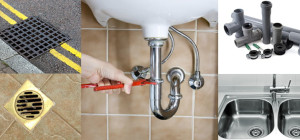The on-demand food delivery segment has witnessed continuous growth since the 1990s. Talking of numbers, the on-demand food delivery market size was $81.56 billion in 2017, and it is expected to reach $161.57 billion by 2023. Restaurant owners come up with user-friendly models to thrive amid growing competition and thanks to on-demand delivery app development, such models work wonders amid a huge audience.
Looking at the current market trends and people’s growing interest in giving online orders for food delivery, we can remain certain for more opportunities and growth prospects for the restaurant business. Here we mention five top on-demand food delivery models to make your restaurant popular and successful in a short time.
Top Three Business Models for On-demand Food Delivery
The on-demand food delivery industry is growing at a tremendous speed. Globally, many entrepreneurs want to implement various self-sustaining models to make the most of booming on-demand economy and mobility. Some of these business models can effectively reduce efforts and contribute to increasing revenue over the period.
Here we go through the top five business models for your food delivery business. Even startups can leverage their benefits to survive and thrive amid intensifying competition.
Order-only Model or Aggregators
This model can also be called a mediator model also because it acts as a bridge between various local restaurants and customers. FoodPanda is an example of such a model that gives users an access to various cuisines and delicacies of different restaurants through a mobile app. As an on-demand food delivery business owner your responsibility is limited to take the orders from the app users and pass them with a group or member restaurants. The restaurants will prepare and deliver the meal to the users.
Here the restaurants manage to deliver the food to the app users and use their team of delivery agents. As an aggregator, you get a fixed fee on every order placed through your app. Usually, group restaurants do not take any extra charge from their customers. The on-demand delivery app development services assist you to come up with three different app versions- User, restaurant and admin to implement this model. Companies like Just Eat and Delivery Hero have got success through this model.
Order and delivery model
This is the next version of the ‘Only Delivery’ model. It is also known as the ‘New Delivery’ model. Here, as an entrepreneur, you have to provide the logistics facility to the partner restaurants. This model provides opportunities to both- restaurants and food delivery companies. On one hand, restaurants do not need to invest in logistics, and on the other hand, food delivery service providers can develop more revenue streams.
This model is successfully implemented by a few of the top global brands like Deliveroo, and UberEats. Anyone can be a delivery driver simply by registering with these apps. Restaurants can focus on improving the client services as the food delivery company takes care of logistics or delivering the order. You can get a fixed fee from both eateries and customers for offering convenient food delivery services.
This model gains ground most swiftly across the food delivery domain, and it is estimated that this model’s market will cross €20 billion by the year 2025.
This model requires more resources in the form of users, drivers, and restaurants. On-demand delivery app development services provide you three different versions of your app for three stakeholders- customers/users, drivers, and restaurants.
This model can generate a steady stream of revenue providing you can hire more resources and utilize them efficiently. You can consult an on-demand app development company to build an algorithm that assigns the order to the driver who is nearby the restaurants to save big on fuel and reduce delivery time.
Full-Service Delivery
Startups, small, and mid-size restaurants want to deliver healthy food items in a short time to their customers. They have their in-house chefs and they hire courier guys to ensure timely delivery to their customers. This is known as a full-service food delivery model. Munchery in the US is an example of this model. Here, customers can easily order their favorite food through a menu containing an image, a list of ingredients, and the name of the chef. Customers can get what they want directly from the restaurants.
As compared to the other two models, this model can enable you to make sure that you serve yummy foods to the customers without delay. It is because you have in-house chefs and delivery boys available for cooking and delivering the order. But, the full-service delivery model requires a lot of money, and therefore, startups or beginners may find it difficult to establish this model. Also, you need to maintain different devices and provide salaries to your staff consists of chefs and delivery boys.
Market Trends for On-demand Food Delivery
Out of these three models, the new delivery model is the most popular among the restaurants. Even startups or small restaurants can also join this model because they can outsource logistics at affordable rates and thereby increasing their business. It is fair to mention that the new delivery services offer benefits to all participants- partner restaurants, delivery service companies, and customers. This model can open doors to new opportunities for restaurants.
The on-demand delivery app development services will contribute to implementing any of these models effectively. You can address a huge audience through an on-demand app and provide rich user experience by integrating necessary features. Gradually, you can able to build a brand and gain popularity as a reliable food delivery services provider that can help you increase sales and revenue.
Contributed by https://www.solutionanalysts.com/








